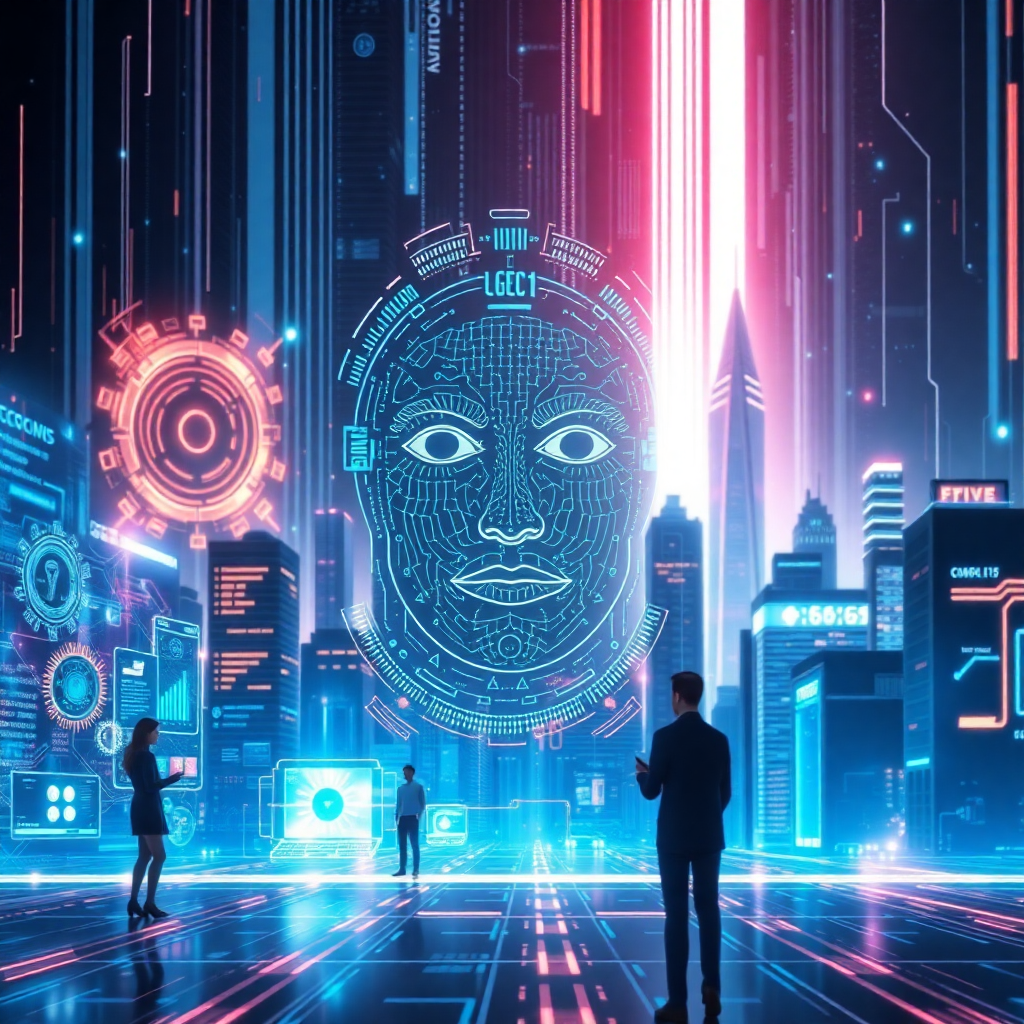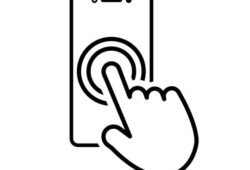Unlocking the Future: Evolution and Impact of Facial Recognition Technology
 Posted On
Posted On
Facial recognition technology is one of the most impressive breakthroughs in AI. Today, it represents a biometric identification system that is based on the principle of placing significant reliance on the algorithms developed to match faces. New areas within security services, customer relations services, and financing have been opened. But what exactly is facial recognition, how does it work, and what are its implications for the future? This article will explore the evolution of facial recognition, its uses, how it works, and the ethical considerations that come with its widespread adoption.
What is Facial Recognition?
What is Facial Recognition? This biometric identification technique tends to scrutinize unique features of one’s face for authentication purposes. This kind of biometric system does not depend on knowledge-based factors such as passwords or PINs. It goes for physical characteristics associated with individual identity. It is widely used in various sectors for security, access control, and identification.
This technology of face recognition scans through a particular face and detects whether it exists or not on any known list. The mechanism applied for this use of facial detection technique is salient-feature detection, used in cases where distance from one eye, the nose shape, and jawline contour create a facial template. Those templates are to be matched from that with the present stored in its database. It happens very soon with a high success ratio; it needs private-public sectors.
What is facial recognition software?
Facial recognition software forms the core of facial recognition technology. It is the computer program or algorithm that enables browsing and recognizes digital images of human faces from video frames. The software performs facial detection, analysis, and even comparison with stored facial database images for identity confirmation or denial.
This also uses visual data processing to impose the technique on neural networks. The facial recognition software has improved over time in terms of accuracy because even if the angle is not right and even while there is obstruction like a hat or glasses on the face, it can easily identify faces. The advancement in AI made it so that its facial recognition evolves with time and is correctly utilizable in security marketing and other practices.
What Is Facial Recognition Used For?
There are many uses of facial recognition technology. Originally, it was a security device but now has evolved to be an instrument of multifaceted utility in the majority of industries.
They are used for the identification of subjects of interest and monitoring of criminals by law enforcement agencies and security firms to promote public safety. The facial recognition system can identify possible threats in crowds in real time.
Personal Identification: A smartphone and every gadget today possess facial recognition capability to unlock your device or authorize a transaction; it is more secure and effortless than using a password or entering a PIN code.
Payment technology: A person can pay and complete a transaction by scanning his face. Usually, it comes with a POS system or through other mobile apps, for secure payments, and not using physical credit cards or passwords in a transaction.
Marketing and Customer Engagement: Retailers and companies use facial recognition to track customers, establish demographic information, and provide personalized ads. When business organizations can recognize emotional responses from customers and know what customers want, they can utilize marketing strategies for improved customer interaction.
Health: Facial recognition has some application in the health sector as well. Some of its applications are used for patient tracking, identification, etc. In the case of big hospitals or clinics, accurate record-keeping of patients is necessary for effective treatment.
How Facial Recognition Works
It takes a picture of an individual’s face and passes it through computer vision algorithms on the computer. One way to achieve this is by fixing the camera lens on certain facial features, including the shapes of eyes, nose, and mouth, as well as the gap in between.
Capture: The initial step to face recognition involves the capture of a clear picture or video. Cameras or sensors record it from various angles.
Detection: It finds where the face is located in the image, captures the face, and isolates it from the background.
Feature Extraction: It captures the software to capture the features and measurements of facial characteristics and creates a template that represents the face.
Comparison and Matching: The template is matched against a known database of people. When there is a match, then the person is identified or authenticated.
Identification or Verification: If facial recognition is applied in identification, it has to look through the whole database for a match. In verification mode, it will confirm whether a face is or is not matching a specific person in the database.
Where is Facial Recognition Applied?
Facial Recognition is utilized in many types of applications that cut across the various industries
Law Enforcement: The police use facial recognition to trace suspects, find missing persons, and improve security through surveillance.
Airports: Some airports have begun using facial recognition to quickly identify passengers and ensure security.
Smartphones: The iPhone employs facial recognition as a biometric way of unlocking phones, making payments, and opening apps.
Retail: Some store chains use facial recognition capabilities to analyze demography and upgrade the shopping experience by giving customers personalized advice.
Finance: Banks have commenced using facial recognition for secure web banking and direct payments.
Benefits of Facial Recognition Technology
Facial recognition technology features several key advantages:
- It comes with an additional layer of safety through unique and difficult-to-forge physical uniqueness, thereby enhancing the safety barrier against identity fraud or theft.
- This makes unlocking devices, making payments, or going through security checks easier, which makes users more convenient and easy.
- Processing identities in real-time will improve processes like check-in procedures at airports or payments at a checkout counter.
- Contactless Authentication: Touchless technology is becoming quite popular; facial recognition, it’s a hygienic alternative compared to PINs or passwords, which rely on contact.
- Despite its merits, the utilization of facial recognition technology has heightened high levels of alarm on matters of privacy, surveillance, and civil liberties. For instance, the wide adoption of facial recognition may, in the end, undermine the rights of privacy of individuals where governments and firms collect enormous amounts of personal data without the permission of users. More concerning is the fact that facial recognition can harbor racial biases, thus raising an issue as to whether the system can deliver fair and accurate outcomes or not.
Conclusion
Facial recognition technology was once regarded as a security solution for special purposes. The eventual mainstreaming of it is there in the change be it making personal safety better or simplifying a payment process. But with its widening usage, there is also an increasing need to regulate and to consider ethics properly so that peoples’ rights concerning privacy and equal treatment are observed. The future of facial recognition technology is just exciting, and its impact on industries and daily life is huge. The ability to mitigate the challenges and responsibilities with which it must be ensured can unlock the full potential of this mighty technology.


